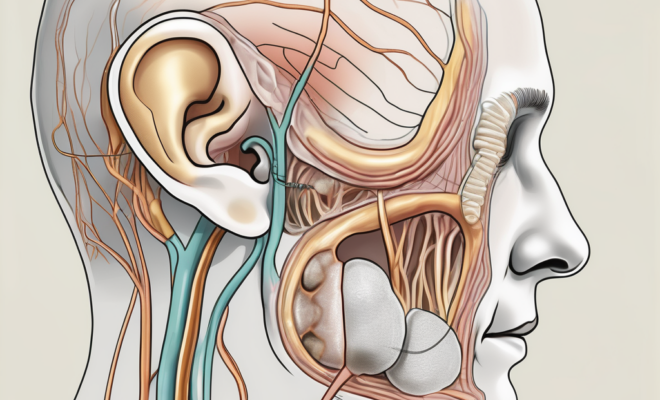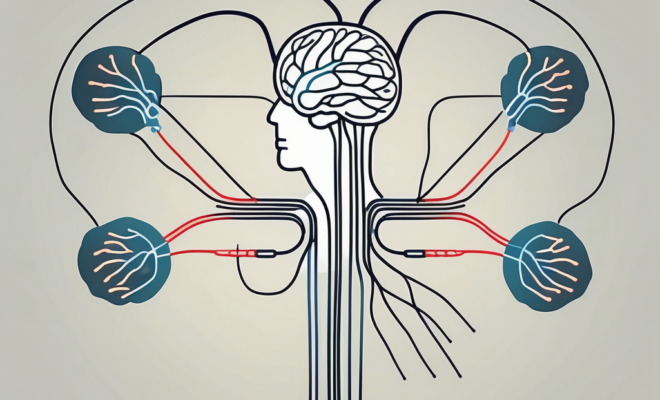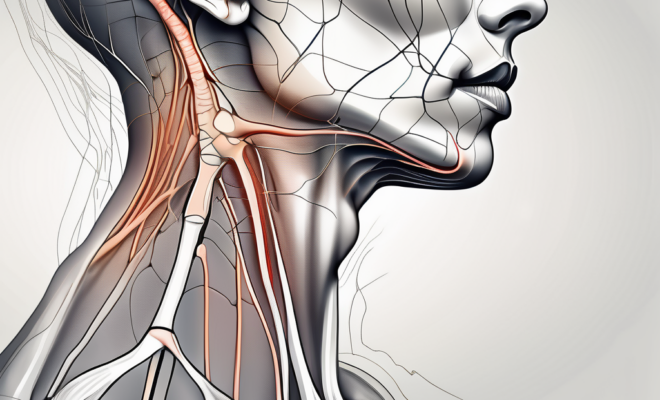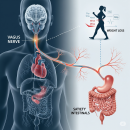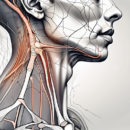Understanding Vasovagal Syncope: Causes, Symptoms, and Treatment
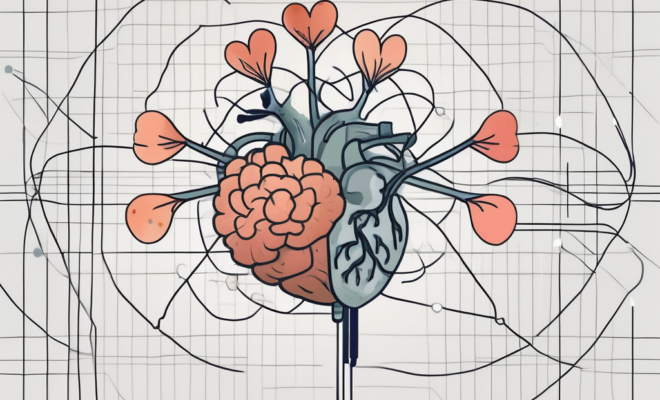
Vasovagal syncope, also known as fainting or neurocardiogenic syncope, is a common condition that affects individuals of all ages. It is characterized by a sudden and temporary loss of consciousness, often triggered by specific stimuli or circumstances. In this article, we will delve into the intricacies of vasovagal syncope and explore its causes, symptoms, and treatment options.
What is Vasovagal Syncope?
Vasovagal syncope is a type of reflex syncope that occurs due to an overactive response of the vagus nerve, which plays a vital role in regulating heart rate and blood pressure. The vagus nerve carries signals from the brain to the heart, and in certain situations, it can become hyperstimulated, leading to a sudden drop in blood pressure and inadequate blood flow to the brain.
Vasovagal syncope episodes typically occur spontaneously or in response to specific triggers such as emotional stress, pain, or prolonged standing. During an episode, individuals may experience a variety of symptoms, including dizziness, lightheadedness, blurred vision, confusion, and, in severe cases, complete loss of consciousness.
The Science Behind Vasovagal Syncope
The exact mechanisms underlying vasovagal syncope are not fully understood, but it is believed to involve the interaction between the brain, the heart, and the autonomic nervous system. When the body senses a potential threat or experiences intense emotions, it activates the “fight-or-flight” response, which increases heart rate and constricts blood vessels to prepare for action. However, in individuals with vasovagal syncope, this response becomes exaggerated, triggering a paradoxical reaction that leads to a sudden drop in blood pressure and fainting.
Researchers have identified several potential factors that contribute to the development of vasovagal syncope. These include genetic predisposition, low blood volume, certain medications, and underlying medical conditions such as heart disease or neurological disorders. Understanding these factors can help healthcare professionals better diagnose and manage the condition.
Common Misconceptions About Vasovagal Syncope
There are several misconceptions surrounding vasovagal syncope that can perpetuate misunderstandings about the condition. One common misconception is that fainting is always a sign of a serious underlying medical problem. While it is essential to rule out any potentially serious causes, most episodes of vasovagal syncope are benign and do not pose a significant health risk.
Another misconception is that only weak or anxious individuals experience vasovagal syncope. In reality, anyone can be susceptible to these episodes, and factors such as dehydration, heat exposure, or even strong emotions can trigger an episode in individuals who are otherwise healthy.
It is important to note that vasovagal syncope is a relatively common condition, affecting people of all ages and backgrounds. By dispelling these misconceptions, individuals with vasovagal syncope can gain a better understanding of their condition and seek appropriate medical attention when necessary.
Managing Vasovagal Syncope
While there is no cure for vasovagal syncope, there are strategies that individuals can employ to help manage and reduce the frequency of episodes. These strategies may include:
- Avoiding triggers: Identifying and avoiding triggers that may lead to an episode, such as standing for long periods, extreme temperatures, or emotional stress.
- Maintaining hydration: Staying well-hydrated can help regulate blood pressure and reduce the likelihood of an episode.
- Changing positions slowly: Standing up or sitting down slowly can help prevent sudden drops in blood pressure.
- Wearing compression stockings: These stockings help improve blood flow and prevent blood pooling in the legs.
- Engaging in regular exercise: Regular physical activity can help improve cardiovascular health and reduce the frequency of syncope episodes.
It is important for individuals with vasovagal syncope to work closely with their healthcare provider to develop a personalized management plan. This may include medication options, such as beta-blockers or selective serotonin reuptake inhibitors (SSRIs), which can help regulate heart rate and blood pressure.
By understanding the science behind vasovagal syncope, dispelling common misconceptions, and implementing appropriate management strategies, individuals can lead fulfilling lives while effectively managing their condition.
Identifying the Causes of Vasovagal Syncope
Vasovagal syncope can be triggered by various factors, and understanding these triggers is crucial for effective management and prevention of future episodes. The causes can be broadly categorized into physical, emotional, and environmental triggers.
When it comes to physical triggers for vasovagal syncope, there are several key factors to consider. Prolonged standing, especially in hot environments or during intense physical exertion, can strain the body’s ability to maintain adequate blood flow to the brain. Sudden changes in body position, such as standing up quickly from a seated or lying position, can also trigger a vasovagal response due to the rapid shift in blood pressure. Additionally, intense exercise can lead to dehydration and electrolyte imbalances, further increasing the risk of syncope.
Physical Triggers
Physical triggers for vasovagal syncope include prolonged standing, sudden changes in body position, intense exercise, exposure to heat, and intense pain. These triggers can lead to a surge in vagal activity, resulting in a drop in blood pressure and subsequent fainting. Identifying and modifying these triggers can significantly reduce the frequency of syncope episodes.
Emotional triggers play a significant role in the onset of vasovagal syncope as well. Fear, anxiety, stress, and emotional distress can all activate the body’s fight-or-flight response, leading to increased heart rate and blood pressure followed by a sudden drop. The brain’s limbic system, responsible for processing emotions, can influence the autonomic nervous system and trigger a vasovagal reaction. Developing healthy coping mechanisms, such as mindfulness practices or therapy, can help individuals better manage their emotional responses and reduce the risk of syncope.
Emotional Triggers
Emotional triggers such as fear, anxiety, stress, and emotional distress can also induce vasovagal syncope. This response is thought to be mediated by the brain’s limbic system, which plays a central role in emotional processing. Finding healthy coping mechanisms for managing stress and anxiety can help reduce the likelihood of syncope episodes.
Environmental triggers are another important consideration when exploring the causes of vasovagal syncope. Factors such as crowded places, poor ventilation, exposure to certain odors or chemicals, and specific visual stimuli like blood or needles can all contribute to triggering a fainting episode. Understanding these environmental triggers and taking steps to avoid or minimize exposure to them can be crucial in preventing syncope.
Environmental Triggers
Environmental triggers encompass various factors that can contribute to vasovagal syncope. These may include crowded places, hot or poorly ventilated environments, exposure to certain odors or chemicals, and even the sight of blood or needles. Avoiding or minimizing exposure to these triggers can significantly decrease the risk of fainting episodes.
Recognizing the Symptoms of Vasovagal Syncope
The symptoms of vasovagal syncope can vary from person to person and may occur in distinct phases: pre-syncope, syncope, and post-syncope. Understanding these symptoms can assist individuals in recognizing the onset of an episode and taking appropriate steps to prevent injury.
Vasovagal syncope is a common cause of fainting, triggered by a sudden drop in heart rate and blood pressure, leading to a temporary lack of blood flow to the brain. This can result in a range of symptoms that individuals should be aware of to manage the condition effectively.
Pre-Syncope Symptoms
Pre-syncope refers to the period leading up to a fainting episode, where individuals may experience warning signs that something is not right. These symptoms can include lightheadedness, dizziness, feeling warm or sweaty, nausea, and blurred vision. Recognizing these early warning signs can allow individuals to take precautionary measures, such as sitting or lying down in a safe environment.
Additionally, some individuals may also notice a ringing in their ears, a feeling of weakness in their limbs, or a sense of impending doom during the pre-syncope phase. These additional symptoms can serve as crucial indicators that a fainting episode may be imminent, prompting individuals to seek a safe space and avoid potential injury.
During Syncope Symptoms
The syncope phase is characterized by a temporary loss of consciousness, which may last for several seconds to a couple of minutes. During this phase, individuals may appear pale, have a weak or no pulse, and exhibit shallow breathing. It is crucial to ensure their safety during this time, as they may fall and injure themselves.
In some cases, individuals experiencing vasovagal syncope may also exhibit jerky movements or muscle twitching during the syncope phase. These movements are typically involuntary and can be alarming for bystanders, highlighting the importance of creating a safe environment to prevent any accidental harm.
Post-Syncope Symptoms
Following a fainting episode, individuals may experience post-syncope symptoms such as confusion, fatigue, headache, and muscle aches. It is essential to allow time for recovery and gradually return to normal activities, as pushing oneself too soon can increase the risk of subsequent episodes.
Moreover, individuals may also feel emotionally shaken or anxious after experiencing vasovagal syncope, as the sudden loss of consciousness can be a distressing event. Seeking support from healthcare professionals or loved ones can aid in managing the emotional aftermath of a fainting episode and developing coping strategies for future occurrences.
Treatment Options for Vasovagal Syncope
While there is no cure for vasovagal syncope, various treatment options can help manage the condition and reduce the frequency and severity of syncope episodes. Treatment plans are typically tailored to individual needs and may involve lifestyle changes, medications, and, in rare cases, surgical interventions.
Lifestyle Changes
Lifestyle modifications can play a crucial role in managing vasovagal syncope. These may include avoiding known triggers, staying well-hydrated, maintaining regular sleep patterns, and practicing stress-reduction techniques such as mindfulness or deep breathing exercises. Additionally, wearing compression stockings and elevating the head of the bed can improve blood flow and reduce the risk of syncope episodes during sleep.
It is important to note that making these lifestyle changes may require some adjustments and dedication. For example, avoiding triggers may mean avoiding certain activities or situations that have previously led to syncope episodes. Staying well-hydrated may involve carrying a water bottle at all times and being mindful of fluid intake throughout the day. Maintaining regular sleep patterns may require establishing a consistent bedtime routine and creating a sleep-friendly environment. While these changes may seem small, they can have a significant impact on managing vasovagal syncope.
Medications
In some cases, healthcare providers may prescribe medications to help control the symptoms of vasovagal syncope. Commonly used medications include beta-blockers, which help regulate heart rate and blood pressure, and selective serotonin reuptake inhibitors (SSRIs), which can stabilize mood and reduce anxiety. However, the effectiveness of these medications can vary from person to person, and their use may be limited by potential side effects.
It is important for individuals considering medication options to have open and honest discussions with their healthcare providers. This will allow for a thorough evaluation of the potential benefits and risks associated with each medication. Additionally, close monitoring and regular follow-up appointments may be necessary to ensure that the chosen medication is effectively managing the symptoms of vasovagal syncope.
Surgical Interventions
In rare and severe cases of vasovagal syncope, surgical interventions may be considered. These may include implantation of pacemakers or implantable cardioverter-defibrillators (ICDs) to regulate heart rhythm and prevent syncope episodes. These interventions are typically reserved for individuals with recurrent episodes and disabling symptoms that have not responded to other conservative treatment options.
It is important to note that surgical interventions are not without risks and should only be considered after careful evaluation and consultation with a healthcare specialist. The decision to undergo surgery should be based on a thorough understanding of the potential benefits, risks, and alternatives available.
Living with Vasovagal Syncope
Vasovagal syncope can have a significant impact on an individual’s quality of life, but with proper management strategies and support systems, it is possible to lead a fulfilling life despite the condition.
Coping Mechanisms
Developing effective coping mechanisms is essential for individuals with vasovagal syncope. This may involve learning relaxation techniques, engaging in regular exercise to improve cardiovascular fitness, and seeking therapy or counseling to mitigate the psychological impact of the condition. It is crucial to focus on overall well-being and maintain a positive outlook.
One effective coping mechanism is deep breathing exercises. By taking slow, deep breaths during the onset of symptoms, individuals can help regulate their heart rate and blood pressure, potentially preventing a syncopal episode. Additionally, practicing mindfulness and meditation can help reduce stress and anxiety, which are known triggers for vasovagal syncope.
Support Systems
Having a strong support system can make a significant difference in managing vasovagal syncope. Friends, family, and healthcare professionals can provide emotional support, offer assistance during episodes, and help individuals navigate the challenges that arise from living with the condition. Support groups and online forums can also provide a sense of community and a platform for sharing experiences and advice.
In addition to these traditional support systems, technological advancements have also played a role in supporting individuals with vasovagal syncope. There are now wearable devices available that can monitor heart rate and blood pressure in real-time, alerting individuals to any irregularities and potentially preventing syncopal episodes. These devices can provide a sense of security and peace of mind, allowing individuals to engage in daily activities with greater confidence.
Long-Term Prognosis
While vasovagal syncope can be disruptive and unpredictable, most individuals experience a favorable long-term prognosis. With proper management and adherence to treatment strategies, the frequency and severity of syncope episodes can be significantly reduced, allowing individuals to lead active and productive lives.
It is important to note that the long-term prognosis may vary from person to person. Factors such as the underlying cause of vasovagal syncope, overall health, and individual response to treatment can influence the outcome. Regular follow-ups with healthcare professionals are crucial to monitor progress and make any necessary adjustments to the management plan.
By expanding our knowledge and understanding of vasovagal syncope, we can continue to improve the management and treatment options available. Ongoing research and advancements in medical technology hold promise for even better outcomes in the future. With the right strategies in place, individuals with vasovagal syncope can regain control over their lives and thrive despite the challenges they may face.


